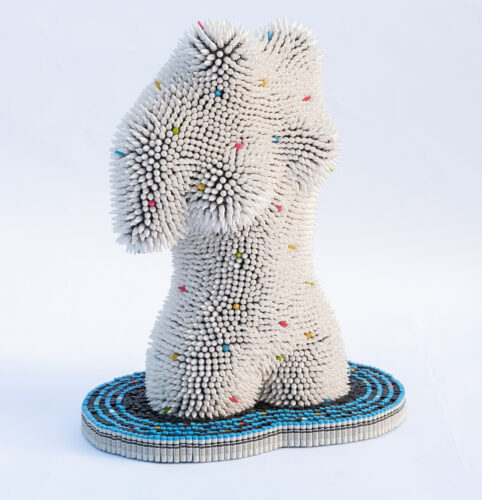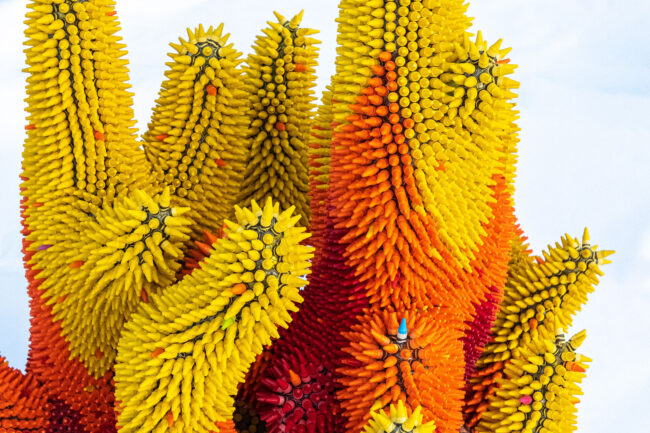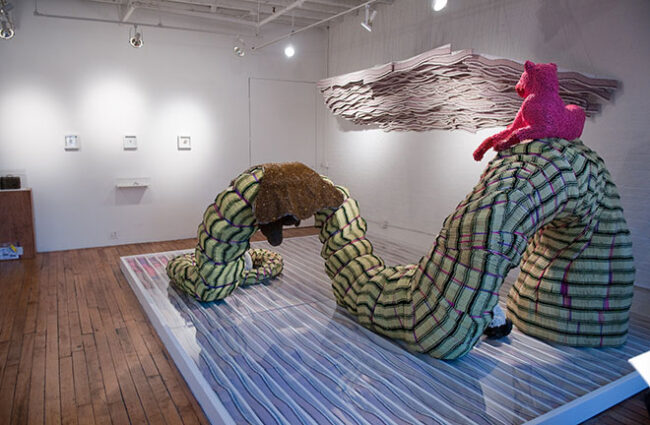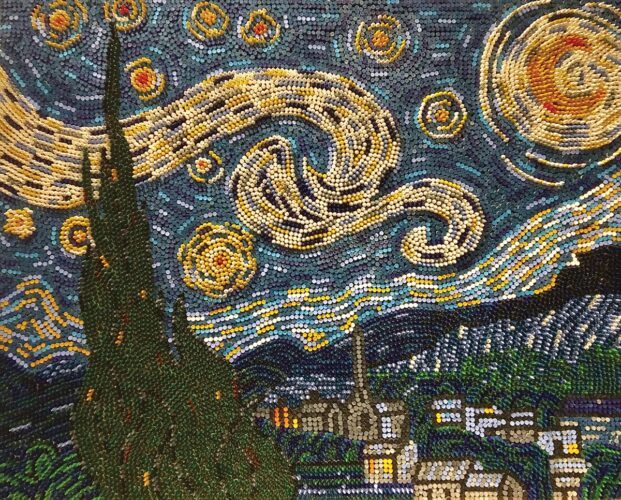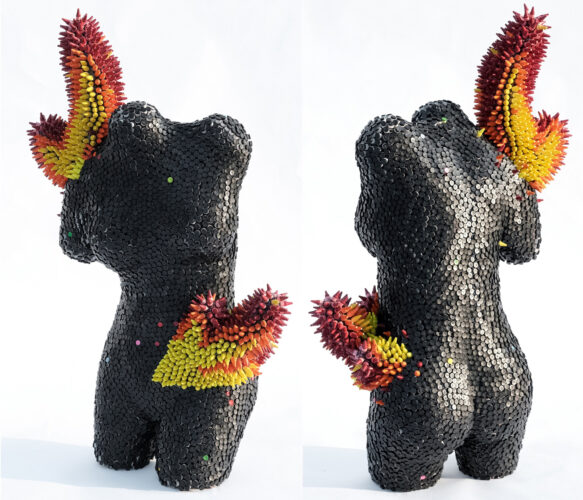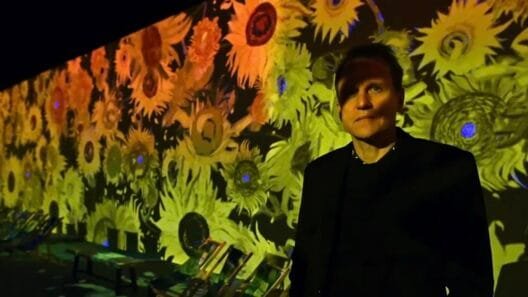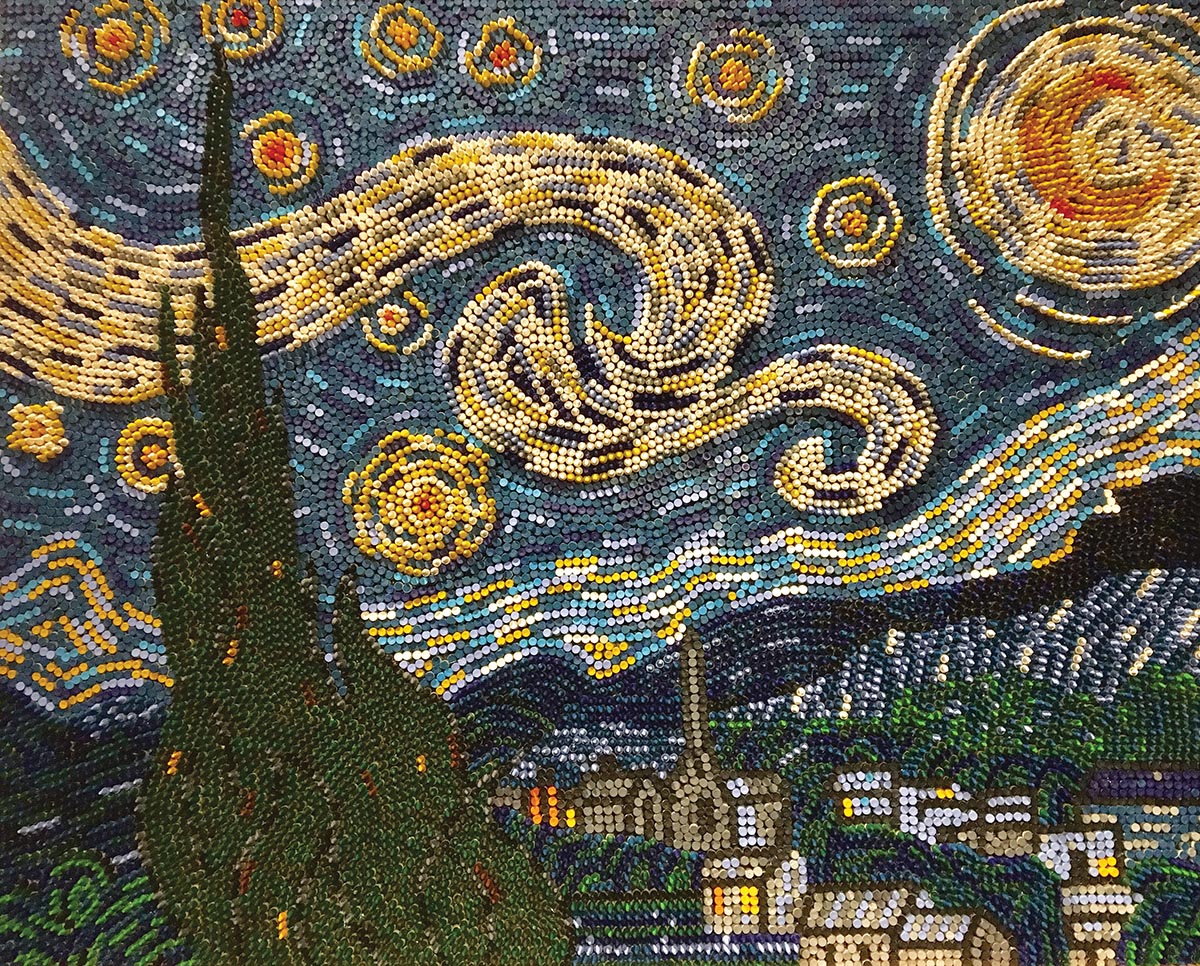Known as the king of Crayola, Nashville-based artist Herb Williams takes the child-like medium of crayons to create sophisticated sculptures that cultivate conversation on social, environmental, and political issues. Using this arguably universal childhood tool of expression, Williams grandiose sculptures draw from centuries of art trends and movements to create a nostalgic experience that transcends time and age. His recreations of the pop art movement, post-impressionism, and ancient greek statues like the Venus de Milo, carry an air of innocence and wonder with their vibrant hues and familiar textures.
Williams sculptures use hundreds of thousands of crayons. He usually orders colours in packs of 3,000 and cuts them down to the length he needs. The sculptures are fused together by the paper covering on the crayon, rather than the wax, and are bonded onto a carved form. One of Williams largest works, titled “Plunderland” used 250,000 crayons and took a year to complete. Like most of his works, the piece reintroduces a childhood tale in an adult context. Inspired by Jack and the Beanstalk, “Plunderland” depicts a sixteen-foot-long beanstalk emerging from a cloud floor that represents the uneasy act of climbing the ladder, or beanstalk, in his art career.
For many, crayons can induce nostalgia and childhood memories. William’s child-like works may be rooted in his traumatic childhood experience of losing his father. At the age of seven, William’s father passed after attempting to rescue a friend from a carbon dioxide leak. William’s desire to create art started in result of the incident. Sculpting became his release and Williams went on to receive a B.F.A. in sculpture from Birmingham-Southern College. William’s art is unique in the sense that it uses the youthful comfort of crayons to invite audiences to participate in more serious conversations. The unexpected depth in his art addresses societal and personal issues in a way that does not scare audiences off but rather eases them into the darker themes of life.
